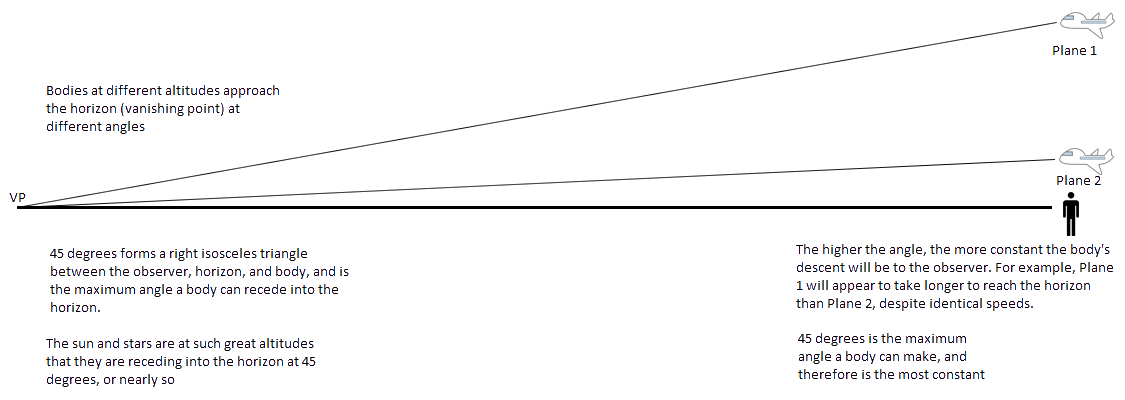6941
Flat Earth Theory / Re: What is and isn't proof
« on: November 17, 2017, 07:16:25 PM »
The answer to the above thought experiment is that you are adopting certain rules to perspective that have never really been demonstrated. The Ancient Greeks alleged that perspective lines operated on the same continuous rules as their trigonometry. But it has never been demonstrated what perspective actually does at long distances. There is no evidence that parallel perspective lines will approach each other forever and never touch, as an example.
There is some empirical evidence that receding bodies get more constant in their progress across the sky as they increase their altitudes, and this can be interpreted to mean that, if the universe does not operate on continuous rules (there is evidence suggesting that we live in a discrete universe), at some point they reach their maximum consistency across the sky. Thus, if the stars are all traveling across the sky consistently, they could not create the angled disk that has been proposed.
See the following article in the Wiki:
https://wiki.tfes.org/Constant_Speed_of_the_Sun
There is some empirical evidence that receding bodies get more constant in their progress across the sky as they increase their altitudes, and this can be interpreted to mean that, if the universe does not operate on continuous rules (there is evidence suggesting that we live in a discrete universe), at some point they reach their maximum consistency across the sky. Thus, if the stars are all traveling across the sky consistently, they could not create the angled disk that has been proposed.
See the following article in the Wiki:
https://wiki.tfes.org/Constant_Speed_of_the_Sun
Quote
Q. If the sun is disappearing to perspective, shouldn't it slow down as it approaches the horizon?
A. The sun moves constant speed into the horizon at sunset because it is at such a height that already beyond the apex of perspective lines. It has maximized the possible broadness of the lines of perspective in relation to the earth. It is intersecting the earth at a very broad angle.
It's widely observable that overhead receding bodies move at a more constant pace into the horizon the higher they are. For an example imagine that someone is flying a Cessna into the distance at an illegal altitude of 700 feet. He seems to zoom by pretty fast when he is flies over your head, only slowing down when he is off in the far distance.
Now consider what happens when a jet flies over your head at 45,000 feet. At that altitude a jet appears to move very slowly across the sky, despite that the jet is moving much faster than the Cessna. With greater altitude the plane seems to move more consistently across the sky. It does not zoom by overhead, only seeming to slow when in the far distance.
When a body increases its altitude it broadens its perspective lines in relation to the earth and the observer, and thus appears to move slower and at a more constant pace into the horizon. In FET the stars and celestial bodies are at such a great height that they have maximized the perspective lines. They are descending into the horizon at a consistent or near consistent velocity. As consequence they do not slow down in the distance by any significant degree, and hence the stars do not appear to change configuration and build up in the distance, nor does the sun or moon appear to slow as they approach the horizon.
The rate of descent of two bodies at different altitudes is more constant because it take a lot longer for a high altitude body to reach the horizon than it does for a low altitude body. The higher a body is, the broader its perspective lines, the longer and more constantly it will appear to approach the horizon to the observer.

